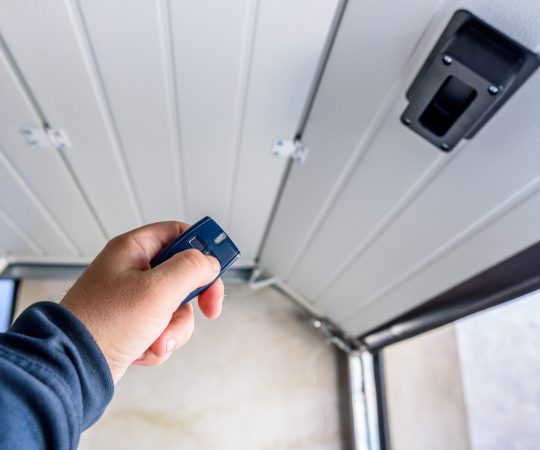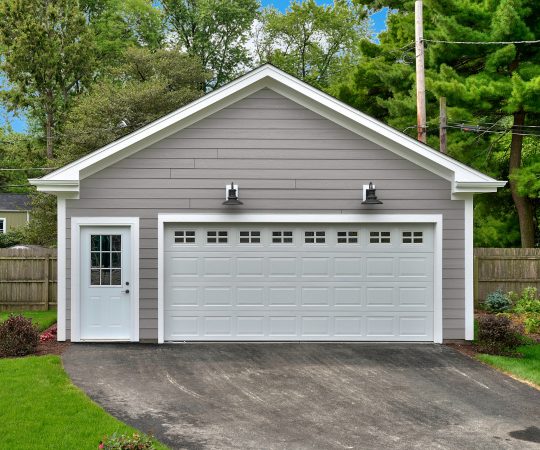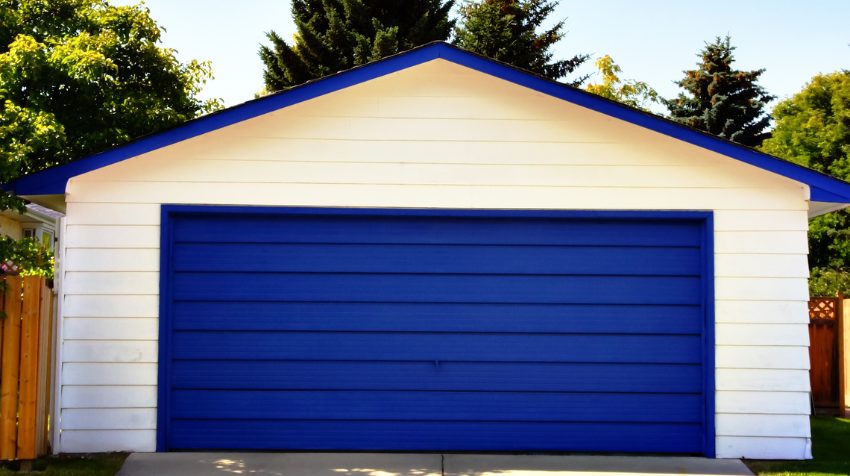Unlocking the Secrets: Exploring the Essential Parts of a Garage Door
You may not realize it, but your garage door is more than just a functional part of your home. It’s an essential component that plays a significant role in the safety and security of your property. Understanding the anatomy of your garage door can help you appreciate its importance and ensure that it operates smoothly for years to come.
Have you ever thought about what goes into making a garage door work? From the springs to the tracks, there are several critical parts that work together seamlessly to lift and lower your door with ease. Knowing how each piece fits into the puzzle can help you identify potential issues before they become major problems, ultimately saving you time, money, and stress.
So let’s take a closer look at the anatomy of a garage door and dive into its essential parts.
The Door itself
You’ll love learning about the main component of your garage door – it’s the part that does all the heavy lifting!
The door itself is made up of various materials, but most commonly, it’s constructed with steel or wood. The design features can vary as well, ranging from a simple classic look to a more modern and sleek appearance. Regardless of its style, the door serves as the primary defense against weather and intruders.
When choosing a garage door for your home, it’s essential to consider various factors such as durability, insulation value, and visual appeal. Steel doors are known for their strength and low maintenance requirements while wooden doors offer natural warmth and beauty. The design aspect is also crucial since it can enhance the overall curb appeal of your home.
Now that you understand more about what makes up your garage door, let’s move on to another crucial component – springs!
Springs
So, you want to know more about garage door springs? Well, there are two main types: torsion and extension.
Torsion springs wind up and store energy when the door is closed, while extension springs stretch and contract when the door moves.
Regardless of the type, it’s important to understand how they work and recognize signs of spring failure before it causes damage or injury.

Types of Springs
As you delve into the different types of springs, it becomes clear that each one serves a unique purpose in the operation of your garage door.
Torsion and extension springs are the two main types used for residential garage doors. Torsion springs are mounted above the door and wind up to provide lifting force when they unwind. Extension springs, on the other hand, stretch along either side of the horizontal tracks and use tension to lift the door.
While both types of springs have their advantages and disadvantages, torsion springs tend to have a longer lifespan compared to extension springs due to their design. As they are wound tightly, they experience less stress with each use and can last for up to 20,000 cycles or more before needing replacement. In contrast, extension springs typically only last for around 10,000 cycles before needing replacement.
Understanding these differences can help you make an informed decision when it comes time to replace your garage door’s spring system.
Understanding how springs work is crucial in maintaining a properly functioning garage door.
How Springs Work
If you’ve ever wondered how your garage door magically opens and closes, the answer lies in the mysterious workings of its springs. There are two types of garage door springs: torsion and extension. Torsion springs are located above the door, while extension springs run along either side of the door. Both types work by storing energy when they’re stretched or wound up, then releasing that energy to help lift the weight of the door.
While garage door springs may seem like simple devices, they require proper maintenance to keep them functioning correctly. Over time, springs can become worn out or weakened from constant use, which can lead to a variety of problems such as difficulty opening or closing your garage door. If you’re experiencing issues with your garage door’s spring system, it’s important to seek out spring repair and replacement services from a qualified technician before further damage occurs. With regular maintenance and timely repairs, your garage door will continue to function smoothly for years to come.
Transitioning into the subsequent section about signs of spring failure, it’s important to pay attention to any unusual sounds or movements when operating your garage door. Catching signs of spring failure early on can prevent more significant damage down the line and save you money in costly repairs or replacements.
Signs of Spring Failure
You need to watch out for these warning signs, or else you could end up with a broken spring on your hands that could potentially harm you or cause damage to your property.
One of the most obvious signs of spring failure is when your garage door starts to make a loud noise during operation. This indicates that the springs are worn out and need replacement.
Another sign is if the door opens unevenly, meaning one side rises faster than the other. This could be due to one of the springs being weaker than the other.
If you notice any of these signs, don’t attempt to fix them yourself as it can be dangerous and may cause further damage. Instead, call a professional garage door repair company who will have troubleshooting techniques for identifying the problem and providing a solution such as spring replacement.
Remember, regular maintenance and inspection can help prevent spring failure, so don’t neglect this important aspect of garage door upkeep.
With that said, let’s move on to learning more about tracks and their role in keeping your garage door functioning properly.
Tracks
The tracks are what guide your precious vehicle safely into its cozy home, so it’s essential to keep them in top shape. Proper track alignment is crucial to ensure that the door moves smoothly and efficiently. If the tracks are misaligned, it can cause the rollers to come off track, which can lead to further damage and potentially dangerous situations.
Track maintenance involves checking for any dents or bends in the tracks and ensuring they’re clean from debris and dirt. It’s important to lubricate the tracks occasionally with a silicone-based spray to reduce friction between the rollers and tracks.
By keeping up with regular track maintenance, you can prevent costly repairs down the line and extend the life of your garage door system. Speaking of rollers, let’s take a closer look at this critical component of your garage door system.
Rollers
When it comes to your garage door, rollers play a critical role in ensuring smooth and efficient operation. There are different types of rollers available on the market, each with its own set of advantages and disadvantages.
To keep your garage door functioning properly, regular maintenance is essential. This includes lubrication and inspection for signs of roller wear, such as cracking or bending.
Types of Rollers
As you watch your garage door smoothly glide up and down, take a moment to appreciate the different types of rollers that allow it to move with ease. The rollers are an essential component of the garage door system, as they bear the weight of the door and enable it to slide along the tracks.
There are three main types of rollers: nylon, steel, and plastic. Nylon rollers are durable and quiet, making them a popular choice for residential garage doors. Steel rollers are strong and long-lasting, but tend to be noisier than their nylon counterparts. Plastic rollers are lightweight and budget-friendly, but may not withstand heavy usage.
When selecting which type of roller is best for your garage door, consider factors such as noise level, durability, and cost. Additionally, roller materials and size options can impact how well your garage door functions. Proper maintenance is also crucial in ensuring your garage door operates smoothly.

Proper Maintenance
Now that you know the different types of rollers used in garage doors, it’s important to understand how to properly maintain them. Preventive measures can go a long way in ensuring your garage door operates smoothly and efficiently.
One common mistake homeowners make is neglecting regular maintenance on their garage door, which can lead to more costly repairs down the line. To keep your rollers in good condition, be sure to clean them regularly with a mild detergent and lubricate them with silicone-based spray or oil. Additionally, inspect the rollers for any signs of wear or damage and replace them as needed. By taking these simple steps, you can extend the lifespan of your garage door and avoid unexpected breakdowns.
Moving forward, it’s important to keep an eye out for signs of roller wear. These indicators include excessive noise during operation, uneven movement of the door, or visible damage to the rollers themselves. If you notice any of these warning signs, it may be time to replace your rollers before they cause further damage to your garage door system.
Signs of Roller Wear
It’s imperative to stay vigilant for any indications of roller wear in order to ensure the smooth and efficient operation of your garage door system. If you notice any unusual sounds or jerky movements while opening or closing the door, it may be a sign that the rollers are wearing down.
You can also visually inspect the rollers for signs of damage such as cracking, chipping, or rusting. In some cases, roller replacement may be necessary. This is a task that can be done as part of DIY maintenance if you feel comfortable doing so. However, if you’re not experienced with garage door repair, it’s best to call in a professional to handle this task.
Keeping an eye on roller wear and addressing it promptly will help extend the life of your garage door system and prevent more costly repairs down the road. Now let’s move on to discussing another essential component: cables.
Cables
You gotta know the cables, they’re what makes that big ol’ metal thing go up and down smoothly. Cables are an essential part of your garage door’s operation. They connect to the bottom brackets of your garage door and run through a pulley system on either side of the door. The cables are responsible for lifting and lowering the garage door as it opens and closes.
Over time, cables can become worn or damaged due to constant use or exposure to extreme temperatures. It’s important to have a professional inspect your cables regularly to check for signs of wear or damage. Replacing cables isn’t a DIY project because it requires specialized knowledge and tools. Cable tension adjustment also needs an expert touch as improper tension can cause serious injury or damage to your property.
Knowing when it’s time for cable replacement or tension adjustment can prevent costly repairs in the future.
Speaking of preventing costly repairs, let’s move on to talking about openers.
Openers
Get ready to discover how openers work and why they’re vital for the smooth operation of your garage.
There are three main types of openers: chain-drive, belt-drive, and screw-drive. Chain-drive is the most common type of opener, as it operates by using a metal chain to move the door up and down. Belt-drive uses a rubber belt instead of a chain, which makes it quieter than chain-drive but can be more expensive. Screw-drive uses a threaded steel rod to move the door up and down, which makes it efficient but can also be noisy.
When choosing the right opener for your garage door, there are several factors to consider such as noise level, speed, cost, durability, and maintenance needs. If you have a heavy garage door or require faster opening speeds, then a chain or belt drive opener may be best for you. If noise levels are important to you or if your garage is located near bedrooms or living spaces in your home, then a belt drive opener may be the better option. Ultimately, selecting the right opener depends on personal preferences and needs, so take time to research each type before making your decision.
Frequently Asked Questions
How much does a garage door weigh on average?
If you’re considering replacing or installing a garage door, one important factor to consider is its weight. Garage doors can vary in weight depending on the materials used, with some weighing as little as 130 pounds and others weighing up to 400 pounds or more.
The weight of your garage door can have a significant impact on its durability, as heavier doors may put more strain on the opener and other parts over time. When choosing a garage door material, it’s important to consider both the aesthetic appeal and practicality of the material in terms of weight and maintenance needs.
By selecting an appropriate weight for your garage door based on your specific needs, you can ensure that it will provide reliable performance and enhance the curb appeal of your home for years to come.
Can I install a garage door opener myself or should I hire a professional?
If you’re wondering whether to install a garage door opener yourself or hire a professional, there are several factors to consider. First and foremost, DIY vs professional installation comes down to personal skill level and experience with home improvement projects.
While installing a garage door opener may seem like a simple task, it can be dangerous if not done correctly. A professional installer has the expertise and tools necessary to ensure your safety and the proper functioning of the opener.
Additionally, cost comparison plays a role in this decision-making process. While DIY installation may initially seem cheaper, mistakes made during installation can end up costing more in the long run. It’s important to weigh the risks and benefits before making a final decision on how to proceed with your garage door opener installation.
How often should I lubricate the garage door parts?
You know that feeling when you’re running on a hot summer day and your body is screaming for water? That’s how your garage door feels when it’s not properly lubricated.
Regularly applying silicone lubricants to the essential parts of your garage door can make all the difference in its performance and longevity. Not only does it reduce friction and wear, but it also helps prevent rust and corrosion.
However, there are common mistakes to avoid when lubricating garage door parts, such as using too much or the wrong type of lubricant. So, make sure to follow the manufacturer’s recommendations and use silicone-based products for optimal results.
By taking care of your garage door with proper maintenance, you’ll ensure that it operates smoothly and efficiently for years to come.
What are some common problems with garage door cables?
If you’re experiencing issues with your garage door cables, it’s essential to understand some common problems and how to troubleshoot them. Regular garage door cable maintenance can help prevent these issues from occurring in the first place.
One common issue is frayed or broken cables, which can cause the door to become unbalanced or stop functioning entirely. Another problem is when the cable comes off of its drum or pulley, causing the door to become stuck or misaligned.
To troubleshoot these issues, it’s important to inspect the cables regularly for any signs of wear and tear and replace them immediately if necessary. Additionally, make sure that the cables are properly aligned on their respective drums and pulleys for smooth operation.
By following these tips, you’ll be able to maintain your garage door cables and keep your door functioning properly for years to come.
Is it safe to replace garage door springs on my own?
If you’re considering replacing your garage door springs, safety should be your top priority. While it’s possible to replace them on your own, it’s important to take the necessary precautions to avoid injury.
Before attempting DIY garage door spring replacement, make sure you have the right tools and knowledge of the process. If you’re not confident in your abilities, it’s best to hire a professional for installation. A skilled technician can ensure that the springs are installed correctly and safely, reducing the risk of accidents or damage to your property.
Ultimately, the decision between DIY and professional installation depends on your level of experience and comfort with handling heavy machinery.
Conclusion
So there you have it, the anatomy of a garage door. It’s more than just a large hunk of metal or wood that opens and closes at your command.
It’s made up of various essential parts that work together to provide you with convenience and security. Think of it like a symphony orchestra, where each musician plays their own instrument but together they create beautiful music.
Similarly, each part of your garage door has its own role to play but together they ensure smooth operation and optimal performance. Now that you understand the different components and how they work, you can better appreciate the complexity and ingenuity behind this common household item.
So next time you use your garage door, take a moment to admire the intricate workings that make it possible.
Related Source

